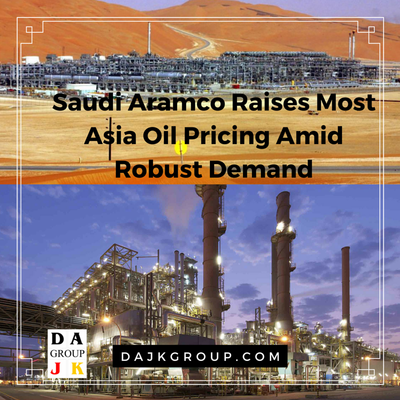|
Last week oil prices suffered their fourth losing week in a row as OPEC continued to argue over a possible production freeze/cut and oil production continued to grow adding to the surplus. At week’s end, futures prices were down to $43.41 in New York and $44.75 in London. The surprising US election results roiled for a few hours on after the results became known, but prices settled on Wednesday with a small gain and were down on Thursday and Friday on new reports of oil production increases and stockpile builds.
OPEC officials continue to maintain that the organization and Russia are committed to the Algiers deal, but most traders and hedge fund managers became skeptical after the failure of the October 28th meeting in Vienna to work out the details. With the exception of the OPEC hype, most of the news last week was bad for prices. The EIA reported another build in US crude stocks; money managers slashed long positions in crude; the EIA reported that the global oil supply rose by 800,000 b/d last month; and that the global market will be awash in oil next year unless OPEC makes significant cuts. The Agency raised its forecast for non-OPEC production increases next year to 500,000 b/d with the increase coming from Russia, Brazil, and Kazakhstan. On Friday, Iran announced that its oil production had increased by 210,000 b/d last month to 3.92 million. This was the biggest monthly increase since the end of the sanctions and 230,000 b/d more than OPEC’s estimate of Iranian production in October. Most observers see the major Middle Eastern producers jockeying for position ahead of the OPEC meeting at the end of November. Another indication of a growing glut was a report that European oil companies have been forced to book oil tankers to store their growing oil supplies as there is no longer any room left on land. There are now 14 to 16 600,000-barrel tankers storing crude in the region, and more are scheduled to be loaded in November. Some are predicting that oil prices will fall into the low $30s or worse if the upcoming OPEC meeting is a failure. In the longer run, however, the likelihood that Venezuelan oil production will continue to shrink and the continuing drop in major oil company capital expenditures is likely to eat away at overproduction even if US shale oil production rebounds. 2. The Middle East & North AfricaIran: Tanker trackers confirm that Tehran’s claim that it increased production by 210,000 b/d last month to 3.92 million b/d is probably true. The Iranians say they too are optimistic that an OPEC oil production agreement will be signed, but still maintain that they are exempt so that the Saudis and others can do the freezing. The big Iranian oil story last week was that France’s Total signed an agreement with Iran to develop part of the South Pars natural gas field. The deal, which may ultimately be worth some $6 billion, is the first post-sanctions agreement signed with the Iranians since the sanctions were lifted. Total had started work on the South Pars field but withdrew from the project six years ago amid rising tensions over Tehran’s nuclear ambitions. For the French, the agreement was simply a renegotiation of a project that they began working on many years ago. China’s National Petroleum Corp also is set to sign a deal to develop the South Pars field. South Pars is shared with Qatar, which is already exploiting its portion of the field. The Iranians fear that the Qataris might be able to produce more than their fair share of the gas, so they are eager to increase production. Like other Middle Eastern countries, Iran is working on laws to spur renewable energy investments, including wind, solar, and hydro projects. Like the Saudis and others, dependence on oil and gas for the bulk of its energy is not only a more expensive way to produce electrical energy, but they have to look forward to the day where production will run dry or be curtailed by climate change agreements. Egypt’s oil minister was reported to be in Tehran last week after the Saudis stopped oil shipments to Cairo. Tehran denies that any agreement to replace the Saudis has been reached. Tehran must be concerned about some of the campaign rhetoric coming out of the recent US elections. President-elect Trump said numerous times that as President he would tear up the nuclear agreement and bring the Iranians to heel by using military force. Given that the EU, Russia, and China are satisfied with the agreement, the impact of a unilateral US pullout would be limited if Tehran’s frozen assets already have been returned and the US has only very limited economic relations with Iran. US Republicans are refusing to lift the remaining sanctions on Iran as Tehran continues missile tests, behaves aggressively in the Gulf, and jails US citizens. A tougher line from Washington, however, could damage the Rouhani government which is already walking a thin line in signing the nuclear agreement. Should the agreement break down, Iran would likely seek to strengthen its relationship with Moscow. Syria/Iraq: There is little going on in Syria these days which directly affects Middle Eastern oil production. The US and various allies, including Iraqi Kurdistan, are preparing for an eventual assault on ISIL’s capital of Raqqa. Meanwhile, the many-sided struggle for Aleppo continues with ever-increasing casualties. The only thing that is certain is that there will not be much left of Syria when the civil war finally ends. There was some oil news from Iraq last week. Kurdistan oil revenues were up in October, but still not high enough to meet the government’s needs in conducting the war against ISIL. The Iraqi Oil Ministry, which had announced plans last month to contract for the development of 12 small oil fields to foreign oil companies, announced that those plans had been changed. State oil companies will develop some of the fields and rest of the plan has been delayed until the middle of next year. The Oil Ministry is scaling back on plans to build a massive water injection system in Southern Iraq. Water flooding of Iraq’s aging field is seen as the best way to maintain and increase oil production in the region. The revised project is much smaller in scope making it more affordable to implement in the short term. A smaller water-flooding system would delay plans to increase oil production to much higher levels. Saudi Arabia: Riyadh told Cairo last week that it was halting deliveries of oil products under a $23 billion aid agreement. Although the Saudis deny it, the reason for the move is thought to be Egypt’s refusal to support the Saudis in a UN vote on the situation in Aleppo. There are indications that Egypt may be turning to Iran to replace the Saudis as the key supplier of oil. There are still no definitive announcements as to the Saudis’ position on the OPEC production freeze. The most we have heard is that Riyadh and its Gulf allies will not be the only ones to bear the burden of production cuts. Low oil prices are continuing to take a toll on the Saudi economy. The government has canceled some $266 billion in planned and ongoing construction projects. The government’s unpaid bills owed to construction firms, medical establishments, and foreign consultants have burgeoned during the financial crisis. One analyst estimates that the government owes construction firms alone some $21 billion dollars. The oil price slump created a $98 billion deficit last year and the deficit in 2016 is expected to be around $87 billion despite a recent $17 billion bond issue. The cutback in construction has resulted in the laying off of some 70,000, mostly foreign, workers and there are tens of thousands of layoffs to come. Many government contractors are going into bankruptcy for lack of government payments. Most of the burden is falling on foreign workers, who are being sent home as contracts are ended. The Saudis are eating their way through their sovereign wealth funds at a pace that will leave them in big trouble in four or five years unless oil prices recover. Libya: The country’s largest oil export terminal, Es Sider, may resume shipment this week as maintenance work nears completion. The terminal has not exported any oil for the last two years. Libya is currently producing about 660,000 b/d and claims to be able to produce close to 1 million if the terminals are open. Before the uprising, the country was producing 1.6 million b/d. 3. ChinaBeijing’s crude imports in October fell by 12.9 percent from the record high in September to 6.78 million b/d -- the lowest level of imports since January. China’s domestic production in October was down, suggesting that domestic consumption was lower than usual. During the month, China’s exports of diesel and gasoline jumped by 24 percent year over year to 919,000 b/d as Chinese refiners produced more finished products than the economy can absorb. China’s October imports, however, were still 9.3 percent higher than in October 2015. As usual, there still is not a good fix on how much of China’s oil is going into strategic storage. The bottom line is that there is still an oversupply of crude in Asia despite analysts’ hopes that the supply/demand gap would be closed by now. Much of the energy news from China last week concerned coal and Beijing’s efforts to clean up its air by cutting production. Coal production has dropped in the last two years as the government closed many small and inefficient mines. It now appears that they have overdone the cuts and have been forced to import increasing amounts of foreign coal to keep their power plants burning. Imports of coal from Australia jumped 33 percent in the 3rd quarter and have led to a marked rise in coal prices. This, in turn, has led to government efforts to lower coal prices by manipulating the prices that large state-owned coal mines receive for their coal. Some are concerned that China’s efforts to become a world leader in setting commodity prices is being bungled by the coal situation. Beijing has reacted with unusual vigor in warning President-elect Trump of the consequences to the planet if he succeeds in slowing progress or even torpedoing the recent climate change agreement. Former President Bush did much the same thing with the Kyoto agreement 15 years ago. For a long time, China resisted whole-hearted participation in efforts to control emissions until dangerous levels of pollution began enveloping its major cities and giant typhoons began battering its coasts. So far the Chinese now are feeling the effects from decades of minimal pollution controls and the early years of global warming far more than dirty air and climate change is hitting the US. India now fears that should the US pull out of the Paris agreement, other countries will follow. Beijing says it will carry on with its plans to reduce emissions no matter what the US does. Source: Oil Review and EIA
0 Comments
|
AuthorDAJK GROUP is the place where investors, business owners and entrepreneurs can research and find useful information, insight, resources, advice, guidance and inspiration for acquiring funds for their project, acquisition for their net lease commercial real estate, increasing their assets and running their profitable business. Archives
July 2023
Categories |
Services |
Company |
|




































